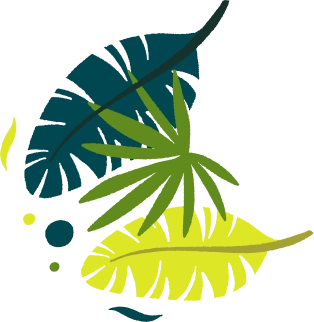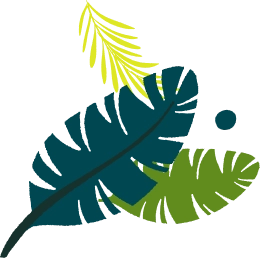


Vietnam’s wild side is full of lush forests, towering limestone karsts and rare wildlife. National parks stretch from misty mountains in the North to tropical jungles in the South. Each park has its own story where Phong Nha caves will awe adventurers, while Ba Be’s emerald lake offers touristy yet relaxing boat rides. These parks are hidden gems for hikers and nature lovers. Visiting them can mean camping under the stars, hearing gibbons at dawn or kayaking in green waters.
Ba Be National Park (Bac Kan): ~250 km north of Hanoi (about 4-5 hours by bus from My Dinh). Entry is ~70,000VND, and you can take boat tours on the lake and arrange homestays with local Tay villages.
Phong Nha Ke Bang (Quang Binh): Reachable via the town of Phong Nha (bus or train from Dong Hoi). From the riverside docks, guided boat tours enter Phong Nha Cave. The park is about 45 minutes from Dong Hoi city.
Cuc Phuong (Ninh Bình): 120 km south of Hanoi (~2-3 hours by road). The park was established 1962 and has primeval forest and conservation centres (primate rescue, turtle rescue). Adults pay ~60,000VND to enter.
Bach Ma (Thua Thien-Hue): Less than 2 hours drive from Hue or Danang. This high-altitude park has cool misty forests and waterfall trails leading up to its summit (the “Sea of Clouds” viewpoint in clear weather). Spring to early summer (Mar-Sep) is best for hiking.
Cat Ba (Hai Phong): An island park reached by a ~4-hour trip (road + ferry) from Hanoi. It includes mountains, rainforest and the rare Cat Ba langur. Trek to jungle viewpoints and explore Lan Hạ Bay by kayak (avoid summer heat; autumn is more comfortable).
Cat Tien (Dong Nai/Lam Dong): About 150 km north of Ho Chi Minh City (3-4 hours by car). The park is famous for a nocturnal wildlife tour: at night you might see gibbons, civets or crocodiles. By day, hike the Tan Phu trail to spot rare birds and monkeys. Best visited December-July (dry season).
Tour companies in Hanoi and Saigon offer day trips to these parks, or you can rent a car/motorbike. In all cases, plan around mountain roads and seasonal weather.
Ba Be National Park: Famous for Ba Be Lake, a huge forest-ringed freshwater lake. Take a boat tour (entry ~70,000VND) through limestone cliffs, swim at the Puong Cave shoreline, and stay in a Tay village homestay.
Here is the google maps location of Ba Be park with over 2000 reviews and an average rating of 4.4 stars.
Phong Nha Ke Bang Is Home to One of the Most Adventurous Hikes in Vietnam Jungles
Phong Nha Ke Bang: A UNESCO site with some of the world’s largest caves. Must-sees: Phong Nha Cave (river boat required) and Paradise Cave (dry cave; entrance ~250,000VND). Nearby routes allow jungle hikes and zipline adventures.
Cuc Phuong National Park Is Just Damn Gorgeous!
Cuc Phuong National Park: Vietnam’s oldest park with dense rainforest. Highlights: a walk to the Silver Cloud Peak for panoramic views, and the Endangered Primate Rescue Center (see gibbons and langurs). Entry ~60,000VND. In spring (Apr-May) you may witness butterfly migrations on the forest trails.
Bach Ma National Park Has Got Majestic Waterfalls All Over the Place
Bach Ma National Park: Midway between Hue and Da Nang, offering cloud forests and waterfalls. Trek to Silver Falls or the summit for the “Sea of Clouds” dawn vista (if weather permits). Cool climate means pine and magnolia trees are in bloom from March to September.
Cat Ba National Park Can Remind You of Ninh Binh Which Was Featured in Kong Skull Island Movie!
Cat Ba National Park: Island wilderness with forests, beaches and wildlife. Hike the Viet Hai village trail or the Lovers’ Trail in Cat Ba Town. Kayak around the limestone islets of Lan Hạ Bay by sunset. (Beware: summer is hot and humid; consider off-peak months.)
Cat Tien National Park Is Teeming With Wildlife
Cat Tien National Park: Home to gibbons, bears and rare primates. Daytime trails (e.g. Crocodile Lake, Wreathed Cave) reveal wildlife and huge trees. Night time boat/jeep tours are a highlight to see nocturnal creatures lit by torchlight. Best in the dry season (Dec-Jul).
Hidden gem of Vietnam: Pu Luong Reserve is a bit off the radar, it offers striking rice terraces and ethnic villages west of Mai Châu. Trek through bamboo forests and valleys, especially beautiful after October when rice fields turn gold.
P.S While not a national park, do consider Trang An landscape complex of Ninh Binh in your Vietnam itinerary just for the amazing scenery and its UNESCO approval tag!
Opening Hours: Most parks are open 6am-5pm daily. Visitor centres and ticket offices operate roughly 7am-4pm.
Admission: Parks typically charge 50,000-100,000VND for entry. For example, Ba Be is ~70,000VND; Cuc Phuong ~60,000VND. Special attractions (e.g. Paradise Cave) have extra fees.
Guides: Hiring a local guide is highly recommended, especially for deep jungle trails or nocturnal tours. They know the animal calls and can ensure you stay safe on hidden paths.
Best Season: Northern parks (Ba Be, Cuc Phuong, Pu Luong) shine in the cool dry months (Oct-Apr). Central parks (Phong Nha, Bạch Ma) are good in spring. Southern parks (Cat Tien, Cat Ba) are best in the dry season (Dec-May). Avoid the peak monsoon (Jul-Sept) when many trails can be flooded or closed.
Safety: Wear sturdy hiking shoes and carry rain gear. Trails can be muddy and slippery after rain. Bring insect repellent for mosquitoes and leeches. Let park staff know your itinerary, and never hike alone at dusk.
Pu Luong Nature Reserve of Vietnam
When is the best time to visit Vietnam’s national parks?
Northern parks (Ba Be, Cuc Phuong, Pu Luong) shine in cool, dry weather (Oct-Apr). Central parks (Phong Nha, Bach Ma) are nicest in spring (Feb-May). Southern parks (Cát Tiên, Cát Bà) are driest Dec-May. Avoid the heavy rains of summer.
How much time should I spend at a park?
Ideally 1-2 full days per park. A long half-day trip can cover highlights (e.g. half-day boat and hike in Ba Bể), but to truly explore (caves, wildlife), plan a full day or overnight.
Are there entry fees and permits?
Yes. Parks charge entrance fees (usually 50,000-100,000VND). Most do not require special permits for visitors, but cave tours do charge extra (e.g. Paradise Cave ~250,000VND).
Is it safe to hike in Vietnamese parks?
Generally yes, if prepared. Stick to trails and consider a guide. Flash floods can occur in the wet season, so ask locals about conditions. Wildlife like snakes or insects can be present - wear boots and long socks.
What should I pack for a park trip?
Good hiking shoes, a rain jacket, insect repellent, sunscreen, and plenty of water. Snacks or energy bars are handy. If camping, bring a tent and sleeping gear (note: camping is only allowed in designated zones in most parks).
Can I see wild animals?
You might! Look for monkeys and birds on daytime hikes. Guided night tours can reveal civets, owls, geckos or even bears (in some northern parks). Big animals like tigers and elephants are extremely rare or locally extinct. Enjoy the smaller wildlife instead.
Get the latest information about our tours and special offers!